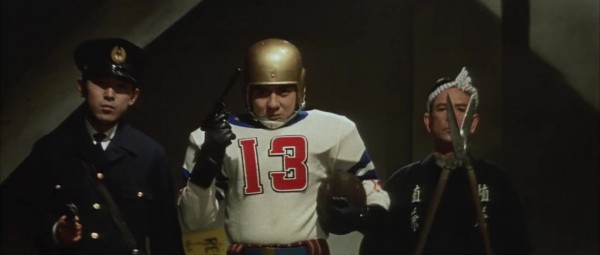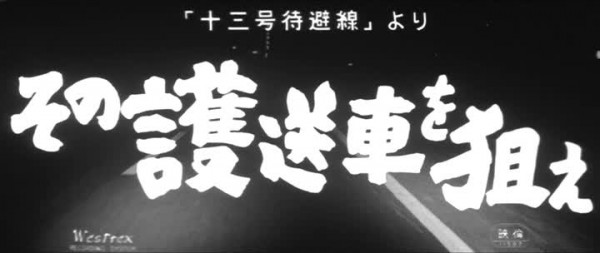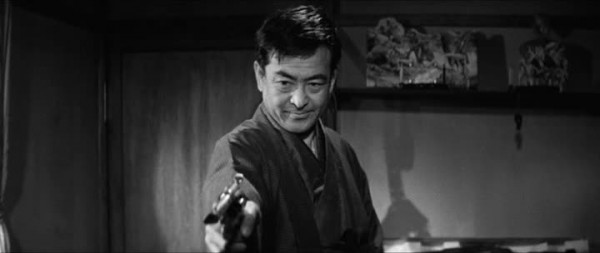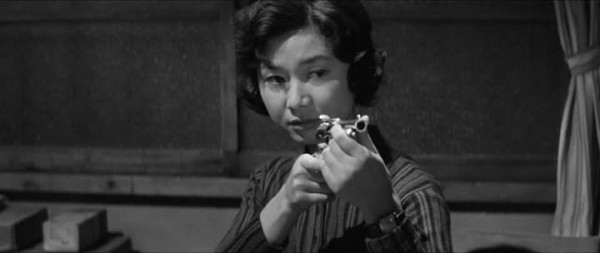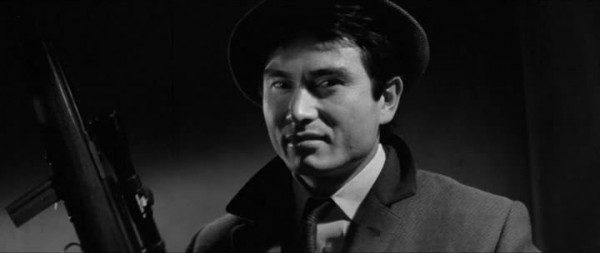Killers on Parade
aka 夕陽に赤い俺の顔 aka Yuhi Ni Akai Ore No Kao aka My Face Red in the Sunset
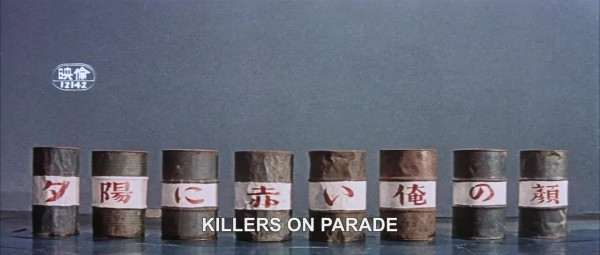
1961![]()
Written by Shuji Terayama
Directed by Masahiro Shinoda
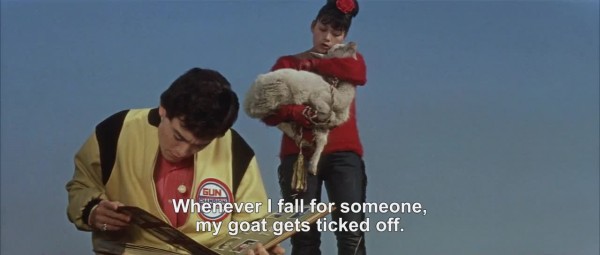
Killers on Parade is a dark comedic flick that features a group of gimmicked hitmen and women as eventual adversaries to our plucky hero, who is on a mission to bring down a corrupt construction firm and the newspaper editor that is attempting to blackmail it. The plot is less important than the colorful characters that are part of the Downtown Killer Club. Killers on Parade is set in a garish comic book world filled with colors and items that bother to label themselves so you know what they are. The villains have gimmicks and costumes that leave you with no doubt as to their gimmicks and roles, and scenes are shot to play up common film locations. While things are overtly goofy, there is enough danger seeded to try to raise actual stakes, but this factor doesn’t seem to have aged well enough to make it to modern day without seeming like a distraction instead of an integrated part of the show.
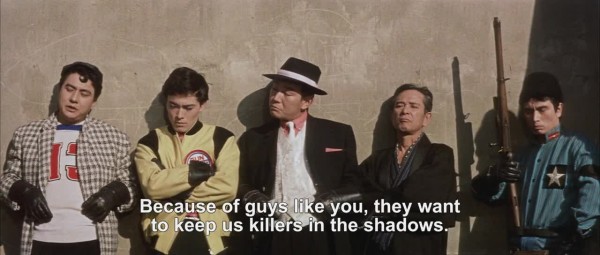
The Murderers 8 present as a united front, but are fiercely competitive, though follow a sense of honor when being assigned jobs, preventing others from interfering and disrupting all their down time. Despite all the characters having day jobs, all they seem to do all day is hang out with each other and get into marksmanship competitions. The Murderers 8 include (please excuse the lack of names for some, they just didn’t get their name mentioned out loud!):
- Hong Kong, a Yakuza gangster stereotype in black suit, who is the most dangerous of the group.
- Senti, a gun champion.
- The bespectacled Doctor, who handily always carries around a black bag that says “Doctor” on it in English.
- Sergeant, a former soldier.
- An Older Guy who appears to dress as a shrubbery cutter.
- A Sports Guy who wears jerseys and during the final battle, a full football uniform and helmet.
- Scarf Guy, whose gimmick is he has a scarf (Okay, they didn’t have time to give everyone personalities!)
- Nagisa (Kayoko Honoo), the lone female killer who often dresses in red and has a pet goat named End. She ran off from home to be a killer, but is starting to grow disillusioned with the lifestyle.
The overall tone is comedic with random bursts of song, providing a send up of the then-recent spate of neonoir/borderless action flicks in Japanese cinema, dosed in wonderful technicolor and layered in sensible silliness. Things seem to make both perfect logical sense in universe, but are also ridiculous when you stop to think about them. The killers demonstrate their marksmanship by shooting at an apple on a kid’s head before the credits. Later they have another shooting competition at the race track to see who gets the new contract.
